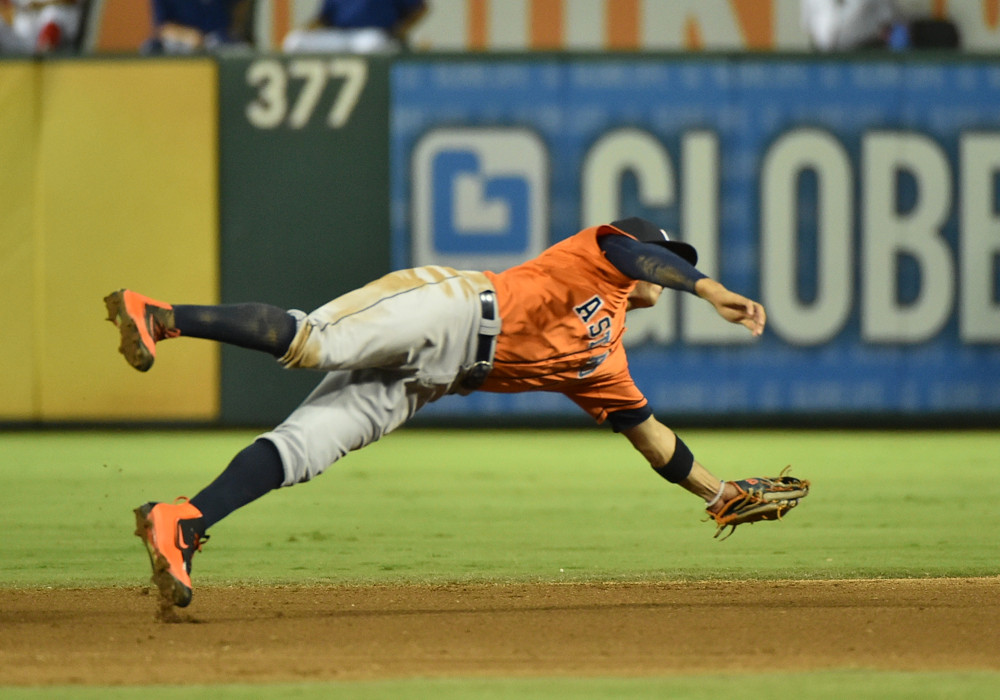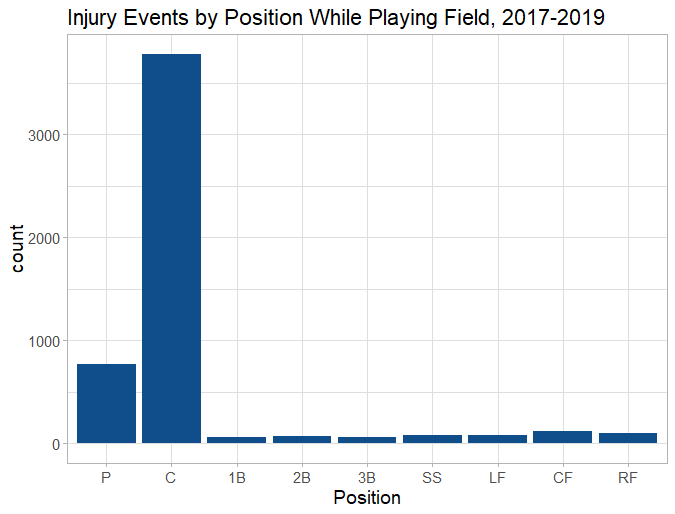BY HARRIS YUDIN
Since the start of the 2017 season, 325 infielders have been the primary fielder on a ball in play with a Sports Info Solutions Defensive Difficulty rating of 3 (1-5 scale). In this piece, we will identify the best and worst at each infield position at converting such plays.
A play with a 3 difficulty is nearly a 50/50 play— one that can go either way (the actual conversion rate is around 55 percent). Seldom is a Defensive Misplay assigned to a toss-up play, and Good Fielding Plays are more commonly associated with a difficulty rating of 4.
While it is challenging to near impossible to eliminate all human error, the video scouts at Sports Info Solutions aim to inject as much objectivity into the process as possible. For example, Nolan Arenado is going to make a difficult play look more makable than will Jake Lamb. The goal is to assign the proper difficulty rating by envisioning a league-average defender attempting to make each play.
In order to qualify here, a player must have at least 200 plays as the primary fielder since the start of last season. All data runs from Opening Day 2017 through May 25.
First Base
Joe Mauer, Minnesota Twins
Mauer’s success rate on these plays is a whopping 84 percent, helped by his being more successful on diving attempts than any other current first baseman, turning 23 of his 57 opportunities into outs (40 percent).
Mauer excels moving to both the left and right, often taking away potential extra base hits down the line. While he may not be particularly flashy, the 35-year-old Mauer is making enough plays for the Twins to put off moving him to DH full-time.
Josh Bell, Pittsburgh Pirates
On the other end of the spectrum, Bell is currently bringing up the rear as one of two first baseman with a conversion rate below 40 percent (37 percent … just worse than Justin Bour’s 39 percent)—which is unfortunate considering, of the group, he has had the second-most such balls hit in his direction (38).
Bell is extremely vulnerable to balls hit down the first base line, with just a 31 percent success rate on plays to the right. The Pirates’ cleanup hitter owns the worst Good Fielding Play–Defensive Misplay ratio at the position, so it makes sense that he fails to convert some of the tougher plays.
Second Base
Javier Báez, Chicago Cubs
Baez, the 2017 multi-position Fielding Bible Award winner, has had his most success at second base, where he’s converted 19 of the 24 plays that were considered toss-ups (79 percent).
He’s the best at the position going back on ground balls, with a 56 percent success rate on plays that require him to break away from the plate. Baez has also fared better when sprinting than any other qualified second baseman, and perhaps most impressively, he has turned a solid 82 percent of forehanded plays into outs (which ranks among the highest for any second baseman). Baez is much more than just a quick tagger; he has great range and picks up almost any ball hit in his vicinity.
Daniel Murphy, Washington Nationals
The eye test tells you that Murphy is well below average defensively. The metrics (-15 Defensive Runs Saved in 2017) agree. And our Defensive Difficulty data? More of the same. The 33-year-old owns a success rate of 41 percent on these plays , the lowest among second basemen.
He has trouble with balls hit up the middle (26 percent moving to the left) and has recorded an out on just one of his 22 diving plays (5 percent). Murphy has yet to play this season, but his body of work from last year is large enough—and concerning enough—to earn him a spot on this list.
Third Base
Justin Turner, Los Angeles Dodgers
While Nolan Arenado blows every other infielder out of the water when it comes to Good Fielding Plays, he has had many more opportunities than all other third basemen. Arenado leads the way in 4-difficulty success rate, but sits fifth in the 3-difficulty category, behind Turner, (71 percent) Eugenio Suárez (71 percent), Adrián Beltré (70 percent) and Kyle Seager (70 percent).
Turner makes a living on weakly-hit balls—his 62 percent success charging in, 54 percent on sprinting plays, and 73 percent throwing on the move are all among the leaders at the position. Watching Turner man the hot corner is less of a spectacle than watching Arenado or Matt Chapman, but the Dodgers’ No. 3 hitter is as clean defensively as you will find.
Todd Frazier, New York Mets
By most advanced metrics, Frazier is one of the better defensive third basemen in baseball (fourth in Defensive Runs Saved, second in Defensive Runs Above Average last year).
So why has he fared so poorly on these plays (43 percent)? Most of his struggles have to do with positioning—specifically his guarding the line—as he owns just a 28 percent success rate moving to the left and a 59 percent rate on backhanded plays.
The eight-year veteran has the fourth-worst Good Fielding Play–Defensive Misplay differential among third basemen, with 10 of his 45 Defensive Misplays coming on ground balls hit down the line. Nicholas Castellanos is actually lower on the list at 40 percent success on toss-ups, but he has become a full-time outfielder this season.
Shortstop
Trevor Story, Colorado Rockies
We’re going to change things up and go with the leader in ‘Grade 3’ play conversions rather than success rate, because though the differential is slim at the top, Trevor Story has a notable edge in successful conversions over Carlos Correa and Miguel Rojas.
Story ranked fourth in Defensive Runs Saved last season. The 25-year-old can be mistake-prone, with the fourth-most Defensive Misplays at the position, but he has also accumulated the most Good Fielding Plays, more than half of which have come on ground balls hit in his direction
Story has thrown on the move 183 times—by far the most in baseball—converting on such plays at a 75 percent clip. This skill has helped him record an out on 43 of the 63 such plays for which he was responsible.
Marcus Semien, Oakland Athletics
Semien isn’t just the worst shortstop at cashing in on toss-up plays—at 26 percent, he’s the worst infielder by a fair margin. He has made just 29 percent of his sprinting plays. Only Travis Shaw has converted a lower rate such plays in this stretch.
Semien was actually 16th out of 59 shortstops in sprint speed last season, so it isn’t as if he can’t reach balls hit up the middle or in the hole. He doesn’t have the skills to cash in on these borderline opportunities. He doesn’t make a ton of mistakes, but his 11 Good Fielding Plays are the 38th most at the position.


